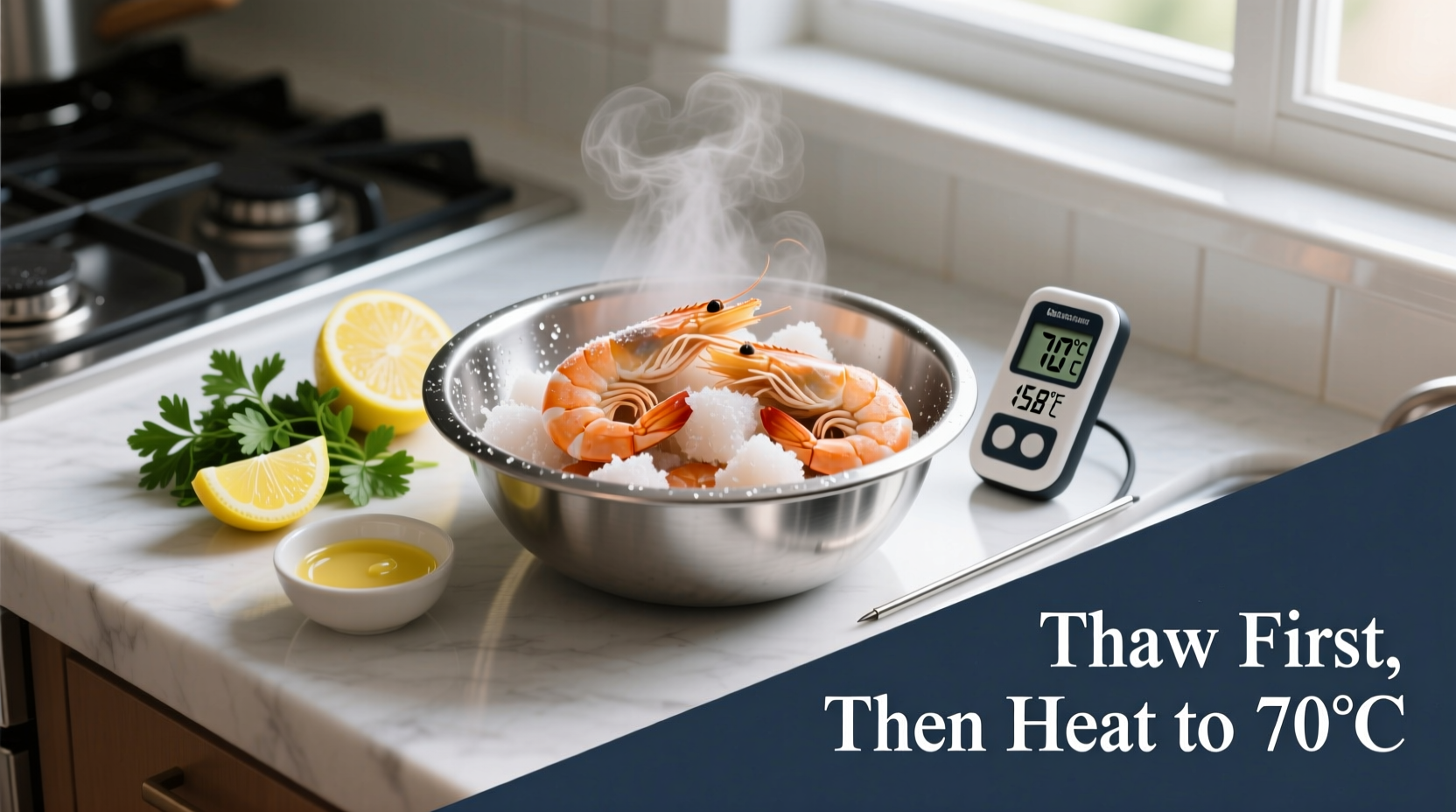Discover how to transform your frozen cooked shrimp from freezer to fabulous in under 20 minutes. As a chef who's worked with seafood professionals and home cooks alike, I've seen the same mistakes ruin perfectly good shrimp time and time again. The good news? With the right technique, you can serve restaurant-quality shrimp dishes using convenient frozen cooked shrimp—without the rubbery texture that plagues most home attempts.
Why Your Frozen Cooked Shrimp Needs Special Handling
Pre-cooked frozen shrimp presents a unique challenge: it's already been through the cooking process once. Unlike raw shrimp that needs proper cooking to become tender, your frozen cooked shrimp only requires gentle warming. Overheating is the #1 reason for tough, chewy results. Understanding this fundamental difference is crucial for success.
When shrimp is cooked properly, the proteins gently coagulate, creating that delicate, slightly firm yet tender texture we love. But when subjected to excessive heat a second time (which happens when reheating frozen cooked shrimp incorrectly), those proteins tighten excessively, squeezing out moisture and creating that unpleasant rubber band effect.
Thawing Methods: Choosing the Right Approach
How you thaw frozen cooked shrimp determines 70% of your final texture outcome. Let's examine the evidence-based methods:
| Thawing Method | Time Required | Texture Result | Safety Rating |
|---|---|---|---|
| Cold Water Bath | 10-15 minutes | Excellent (preserves texture) | ★★★★★ |
| Refrigerator Thawing | 12-24 hours | Very Good | ★★★★★ |
| Room Temperature | 30-60 minutes | Poor (uneven thawing) | ★★☆☆☆ |
| Hot Water/Microwave | 2-5 minutes | Terrible (rubbery texture) | ★☆☆☆☆ |
Based on USDA Food Safety and Inspection Service guidelines, the cold water method provides the optimal balance of speed and quality. Fill a bowl with cold water, submerge the sealed shrimp package, and change the water every 5 minutes. This method safely thaws shrimp while maintaining cellular structure that preserves texture.

Reheating Techniques That Preserve Texture
Now that your shrimp is properly thawed, it's time for the critical warming phase. Remember: your goal isn't to cook the shrimp, but to gently bring it to serving temperature.
Steaming Method (Best for Delicate Dishes)
Place thawed shrimp in a single layer in a steamer basket. Steam for 2-3 minutes until just warmed through. This gentle method prevents direct heat contact that causes overcooking. Professional seafood chefs at the James Beard Foundation consistently recommend this approach for maintaining optimal texture in pre-cooked seafood.
Quick Sauté Technique (For Flavor Enhancement)
Heat 1 tablespoon of olive oil or butter in a skillet over medium-low heat. Add thawed shrimp in a single layer and warm for 1-2 minutes per side. Add garlic, lemon juice, or herbs during the last 30 seconds for flavor infusion without risking overcooking.
No-Heat Applications (For Salads and Cold Dishes)
For shrimp salads or cold presentations, simply thaw shrimp completely in cold water, then pat dry thoroughly. Toss with dressing 10-15 minutes before serving to allow flavors to meld without breaking down the shrimp's delicate structure.
Flavor Enhancement Strategies
Pre-cooked shrimp has already absorbed its initial seasoning, so additional flavors should complement rather than overwhelm:
- Lemon and herbs: A squeeze of fresh lemon juice and chopped parsley added at the end brightens without competing
- Gentle sauces: Toss with pre-warmed sauces rather than cooking shrimp in sauce
- Temperature matters: Add shrimp to hot pasta or rice dishes during the final mixing stage, not during cooking
- Avoid salt overload: Many frozen cooked shrimp are pre-seasoned or treated with sodium solutions
Food Safety Considerations
According to FDA guidelines, thawed cooked shrimp should be consumed within 24 hours when stored at 40°F or below. Never refreeze thawed cooked shrimp, as this creates multiple temperature danger zones that promote bacterial growth. When in doubt about shrimp quality, follow the "when frozen, forever safe" principle—but remember that quality degrades over time, even when frozen.
Troubleshooting Common Problems
Rubbery Shrimp Fix
If you've accidentally overheated your shrimp, create a quick rescue marinade: combine ¼ cup buttermilk with 1 tablespoon lemon juice and soak shrimp for 30-60 minutes in the refrigerator. The lactic acid gently relaxes tightened proteins. Rinse thoroughly before using in cold applications.
Dealing with Freezer Burn
When shrimp shows signs of freezer burn (white, dry patches), trim affected areas and use the shrimp in strongly flavored dishes like curry or tomato-based sauces where texture is less critical. The National Center for Home Food Preservation confirms that freezer-burned food remains safe to eat, though quality is compromised.
Perfect Pairings for Your Prepared Shrimp
Maximize your properly prepared shrimp with these context-appropriate serving suggestions:
- Weeknight dinner: Toss with warm angel hair pasta, olive oil, lemon zest, and fresh basil
- Elegant presentation: Arrange on avocado slices with microgreens and a citrus vinaigrette
- Salad application: Combine with mixed greens, cherry tomatoes, cucumber, and light lemon dressing
- Breakfast option: Add to scrambled eggs with chives and a touch of Old Bay seasoning
Conclusion: Mastering Frozen Cooked Shrimp
By understanding that frozen cooked shrimp only needs gentle warming rather than cooking, you've unlocked the secret to perfect results every time. The cold water thawing method followed by brief, low-heat warming preserves the delicate texture you want. Remember that timing is critical—2-3 minutes is usually all you need for proper warming. With these professional techniques, you can serve impressive shrimp dishes that taste freshly prepared, even when starting from frozen.











 浙公网安备
33010002000092号
浙公网安备
33010002000092号 浙B2-20120091-4
浙B2-20120091-4